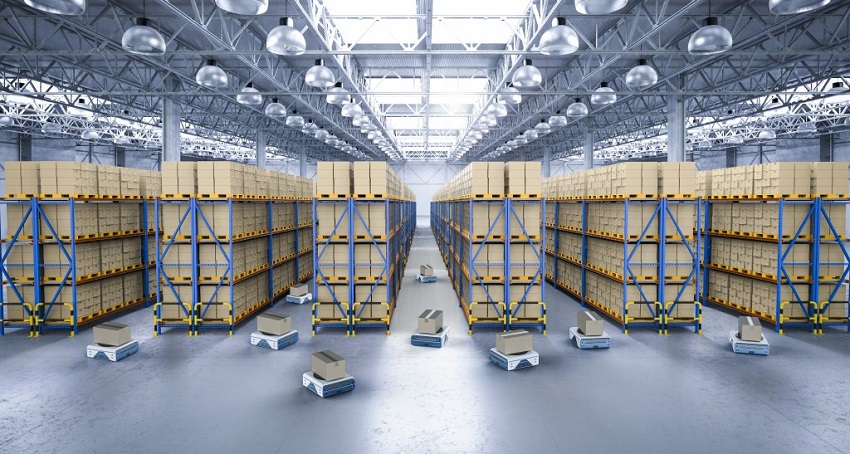Now Reading: The Growing Appeal of Industrial Warehousing Investments
-
01
The Growing Appeal of Industrial Warehousing Investments
The Growing Appeal of Industrial Warehousing Investments

Industrial warehousing investments have emerged as one of the fastest-growing segments in the global real estate market. With the rise of e-commerce, changes in supply chain strategies, and increased demand for storage and distribution hubs, warehouses are no longer just industrial backdrops they are now strategic assets attracting both institutional investors and private players.
This article explores why industrial warehousing has become such a hot investment avenue, the key factors driving demand, success stories from around the globe, and what the future holds for this rapidly expanding sector.
Why Industrial Warehousing is Gaining Attention
The industrial real estate sector was once considered less glamorous compared to commercial or residential property. However, a shift in consumer behavior and global trade patterns has changed that perception. Investors are increasingly drawn to warehouses because they offer:
- Stable rental income from long-term leases with reliable tenants.
- High demand fueled by e-commerce, retail chains, and logistics companies.
- Strong appreciation potential in markets where land availability is limited.
- Diversification from traditional office or residential property portfolios.
In fact, many real estate investment trusts (REITs) and private equity funds now classify industrial warehousing as a priority asset class.
The E-Commerce Revolution and Warehousing Demand
E-commerce has been the single biggest game-changer for warehousing. Giants like Amazon, Alibaba, and Walmart require extensive networks of fulfillment centers to ensure fast delivery. The “next-day” or “same-day” delivery model wouldn’t be possible without strategically located warehouses.
Some key impacts of e-commerce on warehousing investments:
- Last-Mile Delivery Needs: Warehouses closer to cities are in high demand to reduce delivery times.
- Bigger Storage Facilities: Larger warehouses are needed to stock a wider range of products.
- Automation & Technology: Smart warehouses with robotics and AI are attracting premium investments.
For investors, this means warehouses are no longer simple storage spaces they are critical components of a high-value supply chain ecosystem.
Global Trends Driving Industrial Warehousing Investments
1. Supply Chain Diversification
The COVID-19 pandemic exposed vulnerabilities in global supply chains. Many companies are shifting from “just-in-time” to “just-in-case” models, meaning they stockpile more inventory. This shift directly increases warehouse demand.
2. Urbanization and Consumer Growth
As cities expand, the need for warehouses near urban centers grows. Retailers and logistics firms compete for spaces that enable them to serve millions of urban consumers efficiently.
3. Growth of 3PL (Third-Party Logistics)
More companies are outsourcing logistics to 3PL providers. These firms lease massive warehouses to manage storage, distribution, and returns for multiple businesses.
4. Government Initiatives
In several countries, governments are supporting industrial corridors, free trade zones, and logistics parks to boost economic growth. Such policies make warehousing investments more attractive.
5. Rising Demand for Cold Storage
With the growth of online grocery shopping, pharmaceuticals, and perishables, cold storage warehouses are becoming a lucrative sub-sector of industrial warehousing.
Case Studies: Warehousing Success Stories

United States: Amazon’s Fulfillment Empire
Amazon alone operates hundreds of fulfillment centers across the U.S. The demand generated by its logistics network has significantly boosted property values in areas near its warehouses, creating ripple effects across local real estate markets.
India: The Delhi-Mumbai Industrial Corridor
India’s logistics and warehousing sector has grown rapidly due to economic reforms and e-commerce penetration. Warehousing clusters along the Delhi-Mumbai Industrial Corridor have attracted billions in investments, with rental yields often outperforming traditional commercial real estate.
Europe: Demand Around Ports and Airports
Countries like Germany, the Netherlands, and Belgium have seen huge growth in industrial warehousing, especially around ports like Rotterdam and airports like Frankfurt. These logistics hubs are central to Europe’s trade and distribution networks.
Benefits of Industrial Warehousing Investments
- Higher Yields Compared to Other Real Estate
Industrial warehousing typically offers rental yields of 6–10%, compared to 3–5% in residential real estate. - Lower Vacancy Risk
With booming e-commerce and logistics, demand for warehouses is consistently high, minimizing vacancy rates. - Long-Term Leases
Tenants like logistics firms, retailers, and manufacturers prefer long-term leases, providing investors with stable income. - Resilience During Market Downturns
Even during economic slowdowns, essential industries and e-commerce ensure warehouses remain in use. - Scalability
Investors can start with smaller warehouses and expand into larger logistics parks or portfolio investments.
Challenges and Risks
While industrial warehousing investments are lucrative, they are not without risks. Investors should be aware of:
- High Land and Construction Costs: Urban warehouses require significant upfront investment.
- Regulatory Hurdles: Zoning laws and environmental approvals can delay projects.
- Technological Obsolescence: As warehouses become more automated, older facilities may lose value.
- Market Saturation: In some developed regions, oversupply of warehouses could put downward pressure on rental yields.
Future Outlook: The Evolution of Warehousing
The future of industrial warehousing investments looks promising, driven by:
- Smart Warehouses: Integration of AI, robotics, and IoT for seamless operations.
- Sustainability Trends: Green warehouses powered by renewable energy and designed with eco-friendly materials.
- Regional Expansion: Emerging markets in Asia, Africa, and Latin America are becoming hotspots for warehousing investments.
- Hybrid Models: Combining storage with co-working logistics hubs for smaller e-commerce players.
Industry experts believe the next decade will see industrial warehousing become one of the most important real estate investment classes, on par with commercial offices and residential housing.
Conclusion
The growing appeal of industrial warehousing investments lies in their ability to combine stability, scalability, and strong returns. As global trade, e-commerce, and supply chains continue to evolve, warehouses will remain essential infrastructure supporting the world economy.
For investors seeking reliable long-term opportunities, this sector offers immense potential. By carefully selecting locations, understanding tenant needs, and staying ahead of technology trends, industrial warehousing can deliver both steady income and capital appreciation.
Follow us on: Instagram
Read More:Artificial Islands UAE Real Estate: Growth & Expansion






















